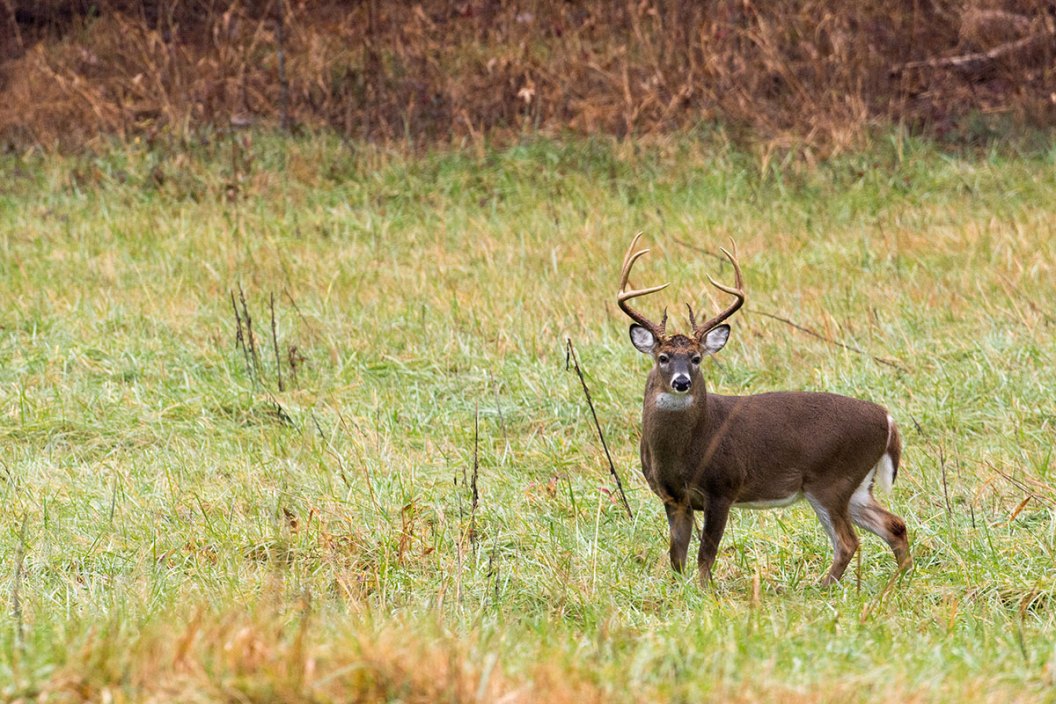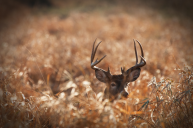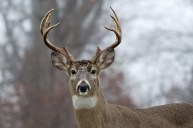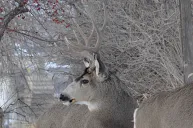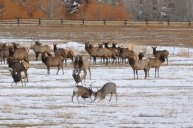If you're in the know, then you've heard about Kansas deer hunting. Here's what it's all about.
Kansas is circled by four of the best overall hunting states in the lower 48: Nebraska, Missouri, Oklahoma, and Colorado. That puts her smack dab in the middle of perhaps the best hunting region in the contiguous U.S.
So where does that put the Jayhawkers on the deer hunting map?
Right at the top, as many experienced and knowledgeable sportsmen will argue.
Kansas is the fifteenth largest state in the union by area and one of its most productive, agriculturally speaking. Producing high yields of wheat, corn, sorghum, and soybeans, the Sunflower State also has another product deeply ingrained in our hunting brains: stud whitetail bucks.
Kansas has varied deer habitat, but not as varied as some other states can claim. While the western two-thirds of the state, has a generally flat or mildly rolling surface, the eastern third has some hilly areas and forests.
Kansas has a maximum elevation change of roughly only 3,300 feet, making it the twenty-third flattest state in the U.S. What's good for deer is also good for an abundance of wildlife, as an outdoorsman coming here can find elk, antelope, bobwhite quail, prairie chickens, pheasant, wild turkey, dove, waterfowl, coyotes, bobcats, and even badgers.
All that, and it's still considered one of the best deer hunting destinations on the planet. Let's investigate further.
Kansas Deer Season and Basic Regulations
Deer season in Kansas is, as in most other places, strictly held in the fall, and almost always occurs around the same series of dates and ranges. You can hunt both mule deer and whitetail deer in Kansas, and both bucks and does are able to be harvested depending on the deer management area.
The 2020 deer season dates in Kansas went like this: Youth and Hunters with Disabilities from September 5 to September 13; Muzzleloader from September 14 to September 27; Archery from September 14 to December 31; Pre-rut Whitetail Antlerless only October 10, 11, and 12; and Firearm season runs from December 2 to December 13.
There are also extended antlerless only and extended archery only seasons that run into January of 2021.
For the 2020-21 season, a non-resident hunting license cost $137.50, and for a non-resident deer permit the price was a cool $442.50. There are also contingencies for non-resident landowners for $87.50, and a non-resident tenant license for $97.50. These prices are subject to change, and you should visit the Kansas Department of Wildlife, Parks and Tourism website (KDWPT) for the most updated information.
Tags in Kansas can be purchased over the counter, online, or even by phone. Regulations allow only one buck per permit, but more than one antlerless deer permits may be purchased by any individual. While baiting deer is legal on private lands in Kansas, it is illegal on all lands managed by the KDWPT.
Kansas regulations require hunters to tag a deer before it's moved from the area where it was taken. Like many states, the KDWPT offers a voluntary electronic deer check-in system that hunters can access with their smartphone.
To legally hunt deer in Kansas you must use centerfire rifles and handguns that are not fully automatic, and ammunition must be solid lead, soft point, hollow point, or other expanding bullets. You can also hunt deer with a shotgun and slugs, muzzleloader, and even muskets that can be loaded to fire a bullet of .40 inches or larger in diameter, using solid lead, conical lead, or saboted bullets.
When it comes to archery, longbows, recurve bows, compound bows, and crossbows are all legal implements. Lures, decoys and non-electric calls may be used while hunting deer.
Kansas Deer Hunting Style, Approach, and Positive Strategies
The state of Kansas provides some of the best trophy whitetail hunting in the nation, and not too many folks would argue that fact, especially if they have hunted there. The best areas of the state have a mix of sand hill pastures, mature hedgerows, and creek bottoms where whitetails have access to agricultural fields.
Stand locations, whether treestands, box blinds, or ground blinds, are generally based on terrain and wind direction.
Feeders, salt licks, and food plots are the order of the day (except on lands managed by the KDWPT). Chances are you will see deer while hunting in this state, and see them all day long.
For food plot and deer feeding supplies, check out Cabela's.
As flat as Kansas is, the state actually has an interestingly diverse selection of geographical features, ranging from the Great Plains in the West to the Smoky Hills in the center. The Arkansas River Lowlands in the southern and eastern reaches are some of the most pristine areas of the state.
Whitetails, as they are known to do, have adapted extremely well to the modern landscape in Kansas. The abundant cover in natural woodlands, shelterbelts, old homesteads, and grasslands is essential to good deer habitat, and there is more than enough food in the state's cropfields to go around. Mule deer are restricted to the western portion of the state, and while whitetails can be found statewide, their numbers increase as you move west to east.
Biologists and deer experts have reached a consensus when it comes to trophy potential: based on the success of the state's selective management program, the chance to harvest a buck that approaches record book size is as good or better in Kansas as it is in just about any other state.
The downside for deer hunters is that some 95 percent of land in the state is privately owned, meaning a guide or outfitter service might be your best bet (especially if you're planning our first hunt in the state). There are public options such as Tuttle Creek in the northeastern part of the state with 12,000 walk-in acres, and the 7,684-acre Marais des Cygnes Wildlife Area in the southeast section.
The Last Word
It almost seems like there are Pope & Young deer just waiting for capable hunters in Kansas. It's a state trophy whitetail deer are likely proud to call home.
Trophy bucks are such a standard part of deer hunting in Kansas that it almost doesn't matter what method you choose. Whether you are on a muzzleloader hunt, bowhunting for bucks, or just relaxing in treestand and trying to fill your deer tag during rifle season, you've got a legitimate chance at downing the highest-scoring deer of your life.
One thing's for sure: a whitetail deer hunt in Kansas is one that you will never forget.
Looking for a little more or even hot lunch for your hunting blind? Follow my webpage, or on Facebook and Twitter.
NEXT: VENISON CUTS: WE RANK OUR FAVORITES
WATCH
